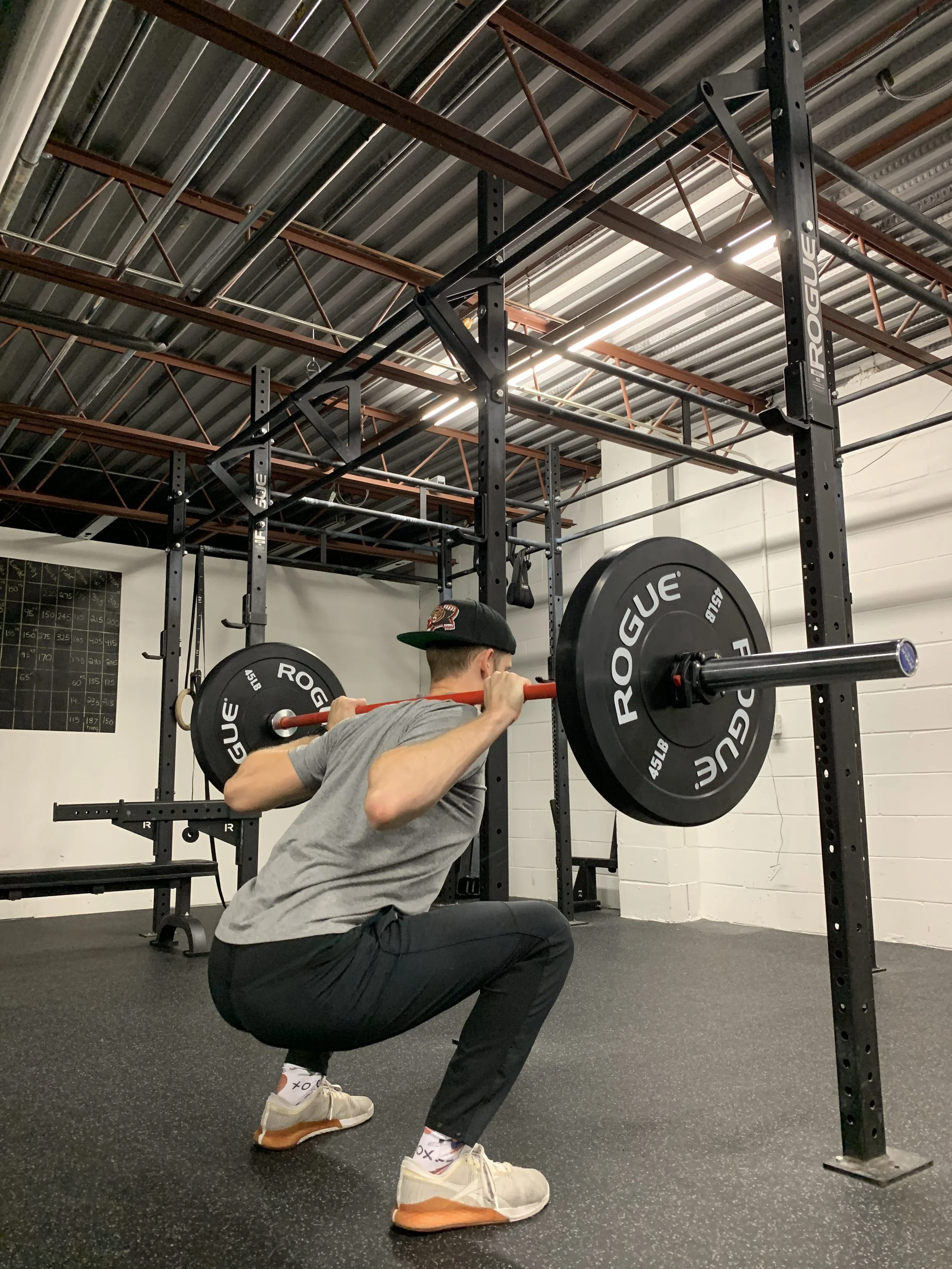1 on 1 coaching
1 on 1 Coaching. Private Coaching. Private Training. Personal Training. Whatever you want to call it, it is for YOU, and only YOU.
You value your time and your progress.
You have specific needs and/or goals.
You want to crush it! With some help and guidance along the way.
Our purpose is to get you where you need to be to do the things you want to do.
We are not looking for lifelong clients.
You have a goal, but something is holding you back.
We are here to address the things that are holding you back.
Maybe it’s pain, maybe it’s experience, maybe it’s knowledge.
We address that roadblock and you are on your way.
Then we never talk again. You will be dead to us.
Kidding!
We will stay in touch as you pursue your next adventure!
What’s Included
A thorough assessment of how you move relative to your goals
No random workouts, everything we do is with a purpose.
A dedicated space for us to train, set up and ready for you before you arrive
Ability to see your workouts before you arrive
Ability to see previous results and progress
Communication with me outside of training
Training to be completed independently (if suitable and needed)
Re-assessments to measure progress towards your goals.
Consistent communication to ensure that we are happy with the direction we are going.
Access to the resource network: preferred providers for Physiotherapy, Chiropractic, Massage Therapy, Nutrition, and Mental Health.
Pricing
Prices range from $77-$105 a session.
Payment plans are available.
Throughout the consultation, we will discuss the best plan forward for you.
If we do not have the best person to help you, we will refer you to someone better suited for you and your needs.
If we determine that we are a good fit to work together, we will create the appropriate plan for you to accomplish your goals.
How We work with People in pain
-
We learn about you: What prompts your pain? What have you tried before? Why do you think it did or did not work for you? Why do you believe this problem occurred? What do you believe needs to be done to address it?
We assess how you move. This is a joint by joint assessment. We tailor it to the activities you want to perform pain-free. This is NOT a “your ankles are shit, we don’t squat until your ankles are perfect”. This is about finding what you are working with and finding areas to focus our attention on. This is also NOT “you can’t pass this test, that’s why your back hurts”. There are multiple factors in the pain experience. Assessments can provide insight, but they do not provide the cause.
We assess how much you’ve moved. Has your movement volume changed recently? Have we done too much too soon after doing too little for too long? Has the type of movement you have been doing changed? Maybe you started a new training program that could have had a better entry point for your current abilities and how your body currently moves.
We assess your lifestyle: How is your recovery? Are you getting adequate sleep and fuel (food) for your body and activities? What are your stress levels like? How are you currently managing your stress? How has your pain affected your lifestyle?
Throughout the assessment, we are also looking for red flags that indicate things that are outside of our scope. There are many things we can help you with, improving your physical capacity being a huge one. But we are not doctors, physiotherapists, chiropractors, massage therapists, etc. We can however work together to help you. Red flags are findings that increase the level of suspicion that there may be a serious underlying medical condition. When we find something outside our scope, we refer you to the appropriate person. When we know it is within our scope and that our services would help you, we will do everything we can to help you.
Yellow flags are beliefs, thoughts, feelings and behaviours that could influence your success. We want you to believe in the process that we will go through together. The first step is knowing what your current beliefs are.
The assessment provides us with information. We are not going to guess how to get you where you want to be.
With the assessment, we have the information needed to know where we currently are. From there we formulate a plan to start moving forward.
This is a team effort. We map out our plan together. It needs to be a plan you are confident in executing on.
This plan could involve many different things. Maybe it’s reducing the volume to let things calm down before building them up. Maybe it’s refining the way you move. Maybe it’s strengthening certain areas relative to the tasks you are doing. Maybe it’s improving the way you recover.
-
We execute our plan. Whether we are seeing you in person or coaching you remotely, we communicate consistently to evaluate progress. If something is working we continue on. If something needs adjustment, we change course.
We continue to engage in the activities that are important to you. Want to play hockey with your kids? Keep going to CrossFit, F45, OrangeTheory, or the group fitness class you enjoy? We are here to support you in that. Guidelines are provided to ensure that you can enjoy those activities even more than you have in the past.
-
Our end state is you being able to engage in the activities that interest you without being limited by pain. This includes feeling more knowledgeable about managing your pain in the future. Flare-ups may happen, throughout our work together you will feel more confident in being able to manage them if they occur.
how We work with athletes
-
We learn about you.
We discuss your goals as an athlete. We discuss your strengths and your challenges. You are an athlete but that does not need to be your identity. We discuss your other interests and other activities that you enjoy.
We discuss other factors that are relevant to your performance. We discuss your recovery, your current training volume, and your other responsibilities (school, work, parenting, etc).
We assess your current abilities.
We want to know how your body currently moves. We will go through a joint by joint assessment to see if there are any areas of opportunity. Maybe we find you have stiff ankles, but that stiffness is useful for your sport. We aren’t messing with that. Maybe your hips have a limited range of motion and more range would put you in a better position for your sport. That’s an opportunity to work on. If you have any history of injury we will go through that assessment process as well.
We also want to know how you move in your sport.
Do you favour certain directions?
Are certain movements more challenging than others?
Does your endurance affect your ability to perform late in a game or event?
Does your response to stressful situations affect your performance?
These are all things we can work on. This comes from seeing you engage in your sport and communicating with your sports coaches.
-
Our assessment has given the information needed to find the areas of opportunities for you as an athlete. We map out a plan to start making progress towards your goals. We tailor this plan to your competition season, your practice schedule, and other responsibilities. We find the times where we have the opportunity to push the effort in training and identify the times where it is more important to maintain and recover.
-
We execute our plan. We communicate consistently to assess how your body is responding. Challenging game or event that has you feeling a bit beat up? We adjust the plan for the time period needed. Got injured? Injuries happen in sports. We adjust and tailor your training to assist in your recovery process and to improve other areas that we can now prioritize even more.
-
At various points, we will reevaluate our process and adjust accordingly. The off-season is the prime opportunity for this. When competition is not happening is when you get to make bigger strides in your training so that you can take another step forward in your abilities. Have we made a weakness into a strength? Perfect. Now onto the next one.
how introduce people to fitness
-
We learn about you.
We discuss what drives you. This is different from what motivates you. Motivation is short-term. I want to know your purpose. I want to know what has gotten you to the place you currently are. I want to know why you want to make a change and what that change would bring you.
We discuss what you have tried before and why you believe that didn’t work for you. We discuss what we feel is needed to get you where you want to be.
We find out what interests you. Don’t enjoy running? That’s totally fine. Like being around others but don’t feel confident enough in yourself yet to be in those environments? I am here to help get you to that point.
We assess your needs.
After we have found out where we want to get to (your goals) we now find out where you currently are. We assess what your current lifestyle is like. We find areas where movement, training, and time to improve your health can fit in. We assess your movement competency. Do you want to join a group fitness class that has a lot of plyometrics? We will assess your current ability and tolerance to do so, and make improvements if needed. Want to train independently but not sure what to do with all the equipment you see? We assess your current knowledge and identify a starting point for you.
-
After we have found where you currently are we find a plan that you are confident in your ability to be successful with. This could mean starting with very small steps in your progress. We are looking for consistent progress over the long term. This requires developing a plan that builds habits. This is not a plan where we try to do too much, only for you to be unsuccessful in the execution.
-
This is where the fun happens. This is where you learn about your body. You learn new skills. You learn about what works for you and what doesn’t. When we find something that doesn’t work for you, we celebrate that. Because now we can eliminate it and find a better option.
We communicate and troubleshoot. If there are specific areas or habits that are more challenging for you, we discuss strategies to assist in that process, or we adjust the plan if needed.
-
Training has become a part of your routine. It is a fixture in your life. You feel confident and capable. You are ready to try new things. You have the knowledge base that enables you to continue your training journey independently if desired.

